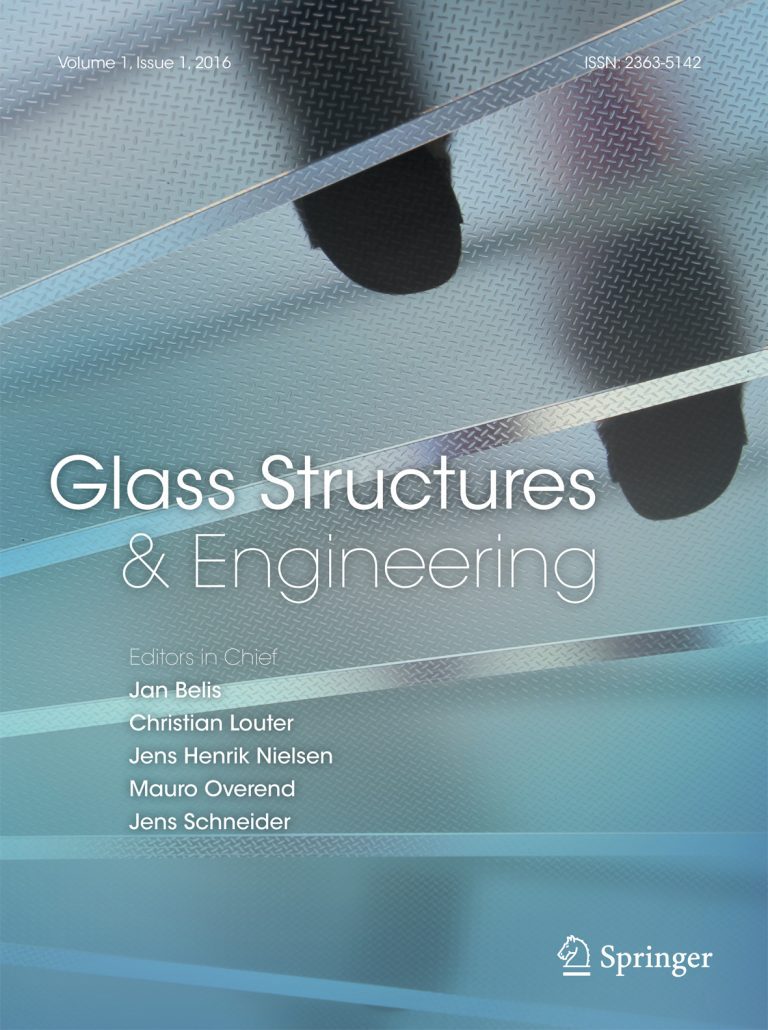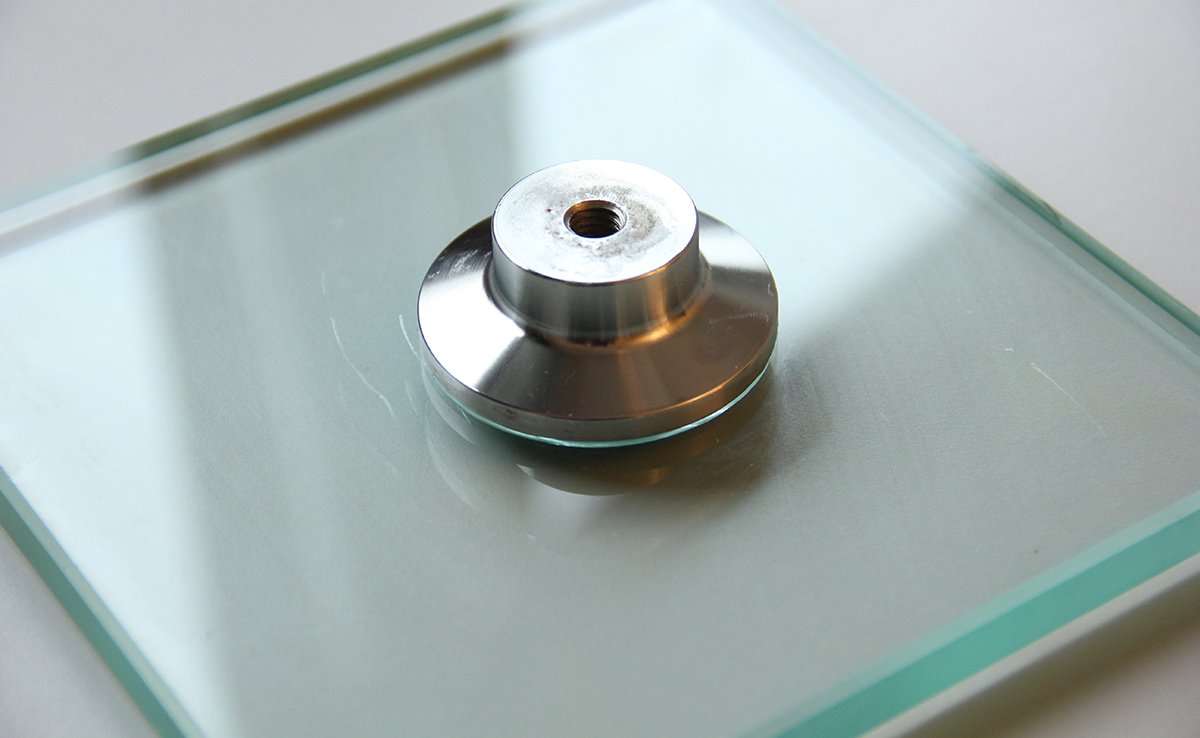Metal disks glued on glass can often replace bolted supports in glass façades, as recent TU Delft research shows. So what’s holding back the application of glued glass constructions?
Take a flat sided disk of steel, put a one millimetre silicon foil under it and glue it onto a glass surface in an autoclave. Apply high temperature (~135 degrees Celsius) and pressure (~12 bars). And, hey presto, the steel will be glued tightly to the glass. Tight enough in fact to replace the bolted connections that are the current standard to keep glass façade panels in place.
A recent publication in the scientific journal Glass Structures & Engineering, based on the master research by Anna Ioannidou-Kati, shows that glued steel disks can withstand tensile forces (perpendicular to the glass) of up to 8 kilo Newton (kN), although the first warning whitening occurs earlier (at 3 kN). Shear forces (along with the glass surface) may even be larger (up to 10 kN), although considerable displacements were measured (1 millimetre at 5 kN).
Glued glass connections are designed for attaching glass panels in a larger façade, where bolted connections are the current industry standard. Wind loads are typically about 1 kN per square metre. To simulate wind loads, the glued connections were tested under repeated varying loads, says Dr Christian Louter (Faculty of Architecture and Built Environment) who supervised Ioannidou-Kati’s thesis, along with Professor Rob Nijsse and Peter de Vries (Faculty of Civil Engineering and Geosciences), Dr Sofia Teixeira de Freitas (Faculty of Aerospace Engineering) and Dr Manuel Santarsiero (EOC Engineers).
So what’s holding back the application of glued connections in construction practice? According to Louter, the building industry currently does not have sufficient trust in glued connections. People are unfamiliar with such glued point connections and worry about the long-term behaviour of these connections under the influence of temperature, humidity and ultraviolet radiation.
In order to gain confidence, the researchers will continue investigating glued connections under accelerated aging and for sustained loading, while at the same time constructing mathematical models which describe the glued connections.


The young scientific journal Glass Structures & Engineering, with Louter as a founding Editor-in-Chief, will track progress. Novel findings and innovations in the field of glass constructions will be discussed at the sixth biannual Challenging Glass congress, May 17-18 2018 at the Aula TU Delft.
Do you have a question or comment about this article?
j.w.wassink@tudelft.nl


Comments are closed.